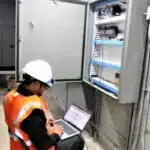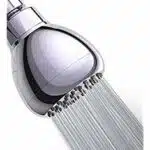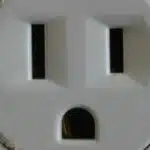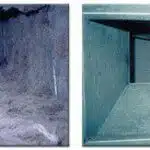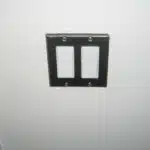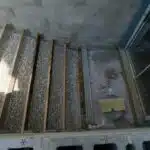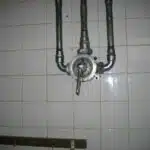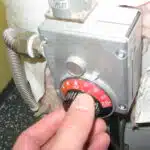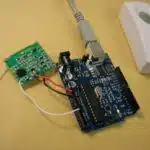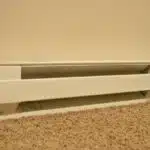As an HVAC technician, testing a furnace pressure switch is a crucial part of ensuring the safety and efficiency of a heating system. A furnace pressure switch works by detecting the pressure inside the furnace’s combustion chamber and ensuring that there is proper airflow for safe operation. If the pressure switch fails or malfunctions, it can lead to dangerous conditions such as carbon monoxide leaks or even explosions.
In this article, we will discuss the steps involved in testing a furnace pressure switch. We will cover how to identify signs of a faulty pressure switch, how to safely disconnect and test the switch, and what readings you should expect to see if the switch is functioning properly. By following these steps and regularly testing your furnace’s pressure switch, you can ensure that your heating system operates safely and efficiently, providing warmth and comfort for those who rely on it.
Understanding The Importance Of Testing A Pressure Switch
As HVAC technicians, we understand the importance of pressure switch troubleshooting in furnace maintenance. A pressure switch is a crucial component that ensures the proper functioning of your furnace. It signals to the control board whether there is adequate airflow, and if there isn’t, it shuts down the system to prevent damage or safety hazards.
Ignoring warning signs of a faulty pressure switch can lead to expensive repairs or even dangerous situations such as carbon monoxide leaks. DIY furnace maintenance is becoming increasingly popular, and while it can save you money in the short term, it’s important to recognize when it’s time to call in a professional. Knowing how to test a furnace pressure switch can help identify potential issues early on before they become more severe.
Whether you’re a homeowner or a technician, understanding the significance of testing a pressure switch is crucial. A faulty switch can affect the performance of your heating system and put your family’s safety at risk. In the next section, we will discuss identifying signs of a faulty pressure switch and how to solve these issues efficiently.
Identifying Signs Of A Faulty Pressure Switch
- High temperatures can be an indication of a faulty pressure switch, as the switch may not be able to activate the fan when the temperature in the furnace increases.
- Abnormal cycling of the furnace, when it cycles on and off too frequently, can also be symptomatic of a defective pressure switch.
- Unusual noises, such as clicking, buzzing, or humming, coming from the furnace can be a sign of the pressure switch not functioning properly.
- It is important to check the switch for continuity when it is in both the open and closed position to ensure it is working correctly.
- If the furnace is not able to reach the desired temperature, this could be an indication of a faulty pressure switch.
- In order to test the pressure switch, it is recommended to use an ohmmeter to measure for correct electrical continuity.
High Temperature
High temperature is one of the common issues that affect furnace pressure switches. As an HVAC technician, it is important to understand the safety measures and maintenance tips necessary for testing a furnace pressure switch in high temperature conditions. It is essential to wear protective gear such as gloves, goggles, and heat-resistant clothing when handling the switch.
When dealing with high temperatures during testing, it is important to keep the area around the furnace clear of any flammable materials. The heat generated by the furnace can ignite nearby materials and cause a fire hazard. Additionally, it is important to ensure that all electrical connections are secure and well-insulated to prevent any electrical faults or short circuits.
Routine maintenance of furnace pressure switches can help prevent damage caused by high temperatures. Regular cleaning and inspection of the switch can identify any signs of wear or damage before they become hazardous. Moreover, proper calibration of the switch ensures that it operates efficiently without causing undue stress on other components in the system. Overall, understanding how to test a furnace pressure switch in high-temperature conditions requires attention to detail and adherence to safety protocols.
Abnormal Cycling
As HVAC technicians, we must be able to identify signs of a faulty pressure switch. One common issue that arises is abnormal cycling. This occurs when the furnace turns on and off rapidly, causing unnecessary wear and tear on the system and increasing energy costs. If left unaddressed, it can lead to further damage to other components in the system.
To troubleshoot this issue, start by checking the air filter. A dirty air filter restricts airflow, causing the furnace to work harder than necessary. Replace or clean the filter if needed. Next, inspect the thermostat settings. Ensure that it is set to an appropriate temperature and that it is functioning correctly. Faulty thermostats can cause improper cycling as well.
If these solutions do not resolve the issue, it may be time to check the pressure switch itself for any signs of wear or damage. DIY maintenance tips include cleaning and inspecting the switch for debris or corrosion regularly. Additionally, proper calibration ensures efficient operation without undue stress on other components in the system.
By identifying abnormal cycling early on and implementing troubleshooting solutions or DIY maintenance tips promptly, HVAC technicians can prevent further damage to a faulty pressure switch while ensuring optimal performance of the furnace system overall.
Unusual Noise
As HVAC technicians, it is our responsibility to ensure that every component of a furnace system is functioning efficiently and effectively. One common sign of a faulty pressure switch is unusual noise coming from the unit. This could be a clicking sound or other irregular noises that are not typical for the system.
Common causes of this issue include worn-out pressure switches, clogged air filters, and malfunctioning blowers. To troubleshoot this problem, we must start by inspecting the air filter for any signs of debris or clogging. If it appears dirty or clogged, then cleaning or replacing it may resolve the issue. Additionally, checking the blower fan and motor assembly for any damage or wear can help identify potential issues before they worsen.
If these DIY maintenance tips do not solve the problem, then professional testing may be necessary to diagnose and repair the faulty pressure switch. This will involve testing the switch using specialized equipment to determine if it is operating within manufacturer specifications. A qualified technician can also inspect other components in the system to identify potential problems that could cause unusual noises.
By identifying and addressing unusual noises early on, HVAC technicians can prevent further damage to a faulty pressure switch while ensuring optimal performance of the furnace system overall. Whether through DIY maintenance tips or professional testing, it is important to take action promptly and efficiently when faced with this issue to avoid unnecessary costs and inconvenience for our clients.
Ensuring Safety Precautions Before Testing
Before testing a furnace pressure switch, it is important to ensure that safety precautions are in place. One of the most critical measures to consider is proper ventilation. Furnaces produce carbon monoxide, which is a colorless and odorless gas that can be lethal when inhaled in large quantities. Therefore, it is recommended that the furnace area be adequately ventilated during testing to prevent carbon monoxide poisoning.
Carbon monoxide poisoning poses significant risks to people and animals alike. Some common symptoms of exposure include headache, dizziness, nausea, confusion, and difficulty breathing. In extreme cases, it can lead to unconsciousness or death. HVAC technicians must take these risks seriously and observe all necessary safety procedures before testing any furnace components such as the pressure switch.
In summary, ensuring safety precautions when testing a furnace pressure switch cannot be overstated. Proper ventilation reduces the risk of carbon monoxide poisoning while protecting both the technician and anyone else nearby from harm. The next step after taking these precautions is gathering all the necessary tools and equipment for the task at hand.
Gathering Necessary Tools And Equipment
Now that we have established the importance of safety precautions, let’s move on to the next step in testing a furnace pressure switch. As a hvac technician, it is essential to gather the necessary tools and equipment before proceeding with any task. In this case, we will need a multimeter and a manometer.
When selecting an appropriate multimeter for this task, it is crucial to consider its accuracy and range. A digital multimeter is recommended as it provides precise readings and can measure both AC and DC voltages. Once you have selected a suitable multimeter, set it to measure voltage within its range.
Understanding manometer readings is also essential when testing a furnace pressure switch. A manometer measures pressure differences between two points in a system using fluid columns. When measuring gas pressures, it is vital to use a U-tube manometer filled with mercury or water. The difference in height between the two fluid columns indicates the pressure difference, which should be within the manufacturer’s specified range.
As we prepare to test the furnace pressure switch, it is crucial to turn off the power supply first. This prevents any electrical mishaps that could occur during testing. Always exercise caution when working around electrical components and follow safety procedures diligently. Now that we have gathered all necessary tools and equipment let’s proceed with testing the furnace pressure switch.
Turning Off The Power Supply
Before testing the furnace pressure switch, it is important to turn off the power supply. This step is crucial to ensure safety and prevent any electrical accidents. As a HVAC technician, we must always prioritize safety measures and avoid any potential harm to ourselves and those around us.
One important aspect of turning off the power supply is grounding. Grounding ensures that there is no electricity flowing through the system before we start working on it. To ground the system, locate the main electrical panel and switch off all breakers associated with the furnace unit. Next, use a voltage meter to confirm that there is no live voltage present in any wires or components.
Locating the power supply may vary depending on the type of furnace unit being used. Generally, most units have an accessible electrical panel located near the blower motor or gas control valve. It is important to read through the manufacturer’s instructions manual thoroughly before attempting to locate and turn off the power supply. Once you have located and turned off the power supply, you can safely proceed with disconnecting the pressure switch for testing purposes.
Transition: With proper grounding and knowledge of where to locate and turn off the power supply, we can now proceed with disconnecting and testing the furnace pressure switch.
Disconnecting The Pressure Switch
To continue troubleshooting a furnace pressure switch, the next step is to disconnect it from the furnace. First, turn off the power supply to the furnace. Then locate where the pressure switch is mounted on the furnace; typically, it is located near the inducer motor assembly. Once you have found it, you can start disconnecting it by removing the wires from its terminals.
Disconnecting a pressure switch is necessary for proper testing because it eliminates any external factors that might affect your readings. By doing so, you can accurately determine whether or not the problem lies with the pressure switch itself. If you find that there are issues with your pressure switch, then it might be time to replace it.
In order to replace a faulty pressure switch, you will need to purchase a new one that matches your furnace’s specifications. Make sure to turn off power supply and remove wires from your existing pressure switch before installing the new one. After installation, ensure that all connections are tight and secure before turning on power again.
Checking For Continuity With A Multimeter
After disconnecting the pressure switch, the next step is to check for continuity using a multimeter. Measuring resistance is essential in determining if there is a break in the circuit or if the switch is functioning correctly. Connect the probes of the multimeter to both terminals of the pressure switch and observe if there is a reading on your device’s screen. If there is no reading, this indicates that the switch may be faulty and needs replacement.
Troubleshooting tips when measuring resistance include ensuring that all wires are correctly connected and that there are no loose connections. Additionally, ensure that you set your multimeter to measure resistance by selecting the appropriate setting on your device before taking readings. Remember also that any resistance reading above zero indicates that current can flow through the circuit.
Testing a furnace pressure switch with a manometer involves using an instrument to measure gas pressure. To do this, connect one end of the manometer tube to the port on your furnace where gas enters and another end to where it exits. Observe and record any differences in pressure between these points while testing different switches’ operations. A malfunctioning switch will cause an abnormal change in gas pressure, indicating it needs replacing.
Testing The Switch With A Manometer
An interesting fact about furnace pressure switches is that they are designed to shut off the furnace when the air pressure inside the furnace becomes too high or too low. This can happen due to a clogged filter, blocked vent, or a malfunctioning inducer motor. In such cases, the switch plays a vital role in ensuring that the furnace operates safely and efficiently.
To test the switch with a manometer, you will need to attach one end of the manometer tube to the pressure tap on the switch and the other end to a source of reference pressure. The reference can be anything from atmospheric pressure to another manometer. Measuring accuracy is crucial during this process as even small errors can lead to troubleshooting errors.
Once you have set up your manometer correctly, you can then turn on your furnace and observe its operations while monitoring readings on your manometer. Interpreting readings on the manometer involves understanding how changes in pressure affect switch operations. We will discuss this further in our next section where we explore interpreting readings on the manometer.
Interpreting Readings On The Manometer
Testing the Switch with a Manometer is a crucial step in determining whether or not a furnace pressure switch is functioning properly. However, measuring accuracy is an essential factor to consider when performing this test. Accuracy can be affected by various factors, such as environmental conditions and human error. To ensure accurate readings, it is important to calibrate the manometer before use and follow manufacturer instructions carefully.
Interpreting Readings on the Manometer is equally important as measuring accuracy when testing a furnace pressure switch. The manometer provides vital information about how well the switch is operating. If the readings are too high or too low, there may be an issue with the switch that requires further troubleshooting. It is important to note that interpreting readings on the manometer can be challenging for inexperienced individuals. Therefore, seeking advice from a professional technician may be necessary.
Troubleshooting errors when testing a furnace pressure switch can save time and money in expensive repairs down the line. Some common issues that may arise include inaccurate readings due to failures in calibration or component damage during installation or use. Troubleshooting these issues requires careful observation of system operations and identification of potential causes through process of elimination. By addressing these issues early on, technicians can prevent further complications from developing and ensure optimal system performance.
Transition: Troubleshooting common issues with furnace pressure switches involves careful observation and identification of potential causes through process of elimination. In the next section, we will discuss some common issues that may arise during testing and provide tips on how to troubleshoot them effectively.
Troubleshooting Common Issues
When it comes to troubleshooting furnace pressure switch issues, there are several things that could go wrong. One common issue is a malfunctioning pressure switch that prevents the furnace from turning on. Another issue is a dirty or clogged air filter that can cause the furnace to overheat and trigger the pressure switch to shut off. Additionally, a faulty venting system can also cause problems with the pressure switch.
If you suspect that your furnace pressure switch is not working properly, there are several common fixes you can try before seeking professional assistance. First, check your air filter and replace it if necessary. Second, inspect your venting system for any signs of damage or blockages. Third, test the switch by using a multimeter to check for continuity.
However, if these DIY fixes do not solve the problem, it may be time to consider hiring a technician for professional assistance. A qualified HVAC technician will have the experience and expertise necessary to diagnose and repair more complex issues with your furnace pressure switch. Plus, they can provide routine maintenance services to help prevent future problems from occurring.
Reconnecting The Pressure Switch
After testing the furnace pressure switch, it is time to reconnect it. Reconnecting the Pressure Switch is a crucial step in ensuring that your furnace runs efficiently. To do this, locate the wires leading from the pressure switch and connect them back to their corresponding terminals. Ensure that the connections are secure and tight.
If you encounter any issues during reconnection, you may need to revisit your troubleshooting techniques. Double-check all of your previous steps and make sure everything is in order before proceeding. If problems persist, consult with a professional HVAC technician for further guidance.
Once you have successfully reconnected the pressure switch, it is time to turn on the power supply. However, it is essential to be cautious when doing so. Make sure that all wires and connections are secure and that there are no loose or exposed wires before turning on the power supply. Failure to do so can result in electrical shock or damage to your furnace system.
Turning On The Power Supply
It is important for HVAC technicians to know how to test a furnace pressure switch in order to ensure the safety and proper operation of a heating system. According to recent studies, a malfunctioning furnace can potentially release harmful gases, such as carbon monoxide, which can cause serious health issues and even death. Therefore, checking the pressure switch is crucial in preventing these dangerous situations from happening.
Before testing the pressure switch, it is important to check the power supply. First, turn off the power supply to the furnace by flipping the circuit breaker or removing the fuse. Next, use a multimeter to check if there is any voltage present in the wiring that connects to the pressure switch. If there is voltage present, then there may be an issue with the electrical system that needs further inspection.
Safety precautions should also be taken when checking for power supply. Always wear protective gear such as gloves and goggles when working with electrical components. In addition, never touch any wires or components without first ensuring that they are not live. By taking these precautions, HVAC technicians can ensure their own safety while performing tests on a furnace’s pressure switch and other electrical components.
Checking for proper operation of a furnace’s pressure switch requires additional steps beyond just turning on the power supply. To properly test it, one must follow specific procedures depending on the type of pressure switch being used. These procedures will be discussed in detail in the subsequent section about checking for proper operation.
Checking For Proper Operation
After checking the furnace pressure switch for continuity, it is important to verify that the switch is operating properly. This involves checking for proper operation of the switch as it opens and closes in response to changes in the air pressure within the furnace. One way to do this is to use a manometer or other pressure measuring device.
Pressure switch troubleshooting can be a complex process, as there are many factors that can affect the performance of these critical components. Some common issues with pressure switches include clogging of the switch port or tubing, incorrect adjustment of the set point, and damage to internal components such as diaphragms or springs. When troubleshooting a faulty pressure switch, it is important to take a systematic approach and check all possible causes of failure before replacing any parts.
Regular maintenance and testing are essential for ensuring that your furnace pressure switch operates reliably and efficiently over time. In addition to checking for proper operation during routine service visits, it may be necessary to perform more extensive testing if you notice any changes in system performance or if you suspect that there may be an issue with your furnace pressure switch. By staying on top of regular maintenance tasks and taking prompt action when problems arise, you can help ensure that your heating system continues to operate smoothly and safely throughout the heating season.
Regular Maintenance And Testing
It’s always a good idea to test your furnace pressure switch regularly. But let’s be honest, who has time for that? Surely, the last thing we want is for our furnace to fail us during the winter months. It’s not like we have anything else to worry about during that time of year.
Common problems with furnace pressure switches include issues with the wiring and connection points. Troubleshooting techniques often involve checking these areas first before moving onto other possible causes. If you’re not comfortable doing this yourself, it might be best to call in a professional HVAC technician.
Frequency of testing depends on several factors such as usage and age of the furnace. Recommended schedule is at least once a year, but if you notice any irregularities or suspect an issue, it’s best to get it checked out sooner rather than later. Remember, prevention is key when it comes to avoiding costly repairs.
Transitioning into the next section, it’s important to note that while regular maintenance and testing are crucial aspects of keeping your furnace in working order, sometimes you just need the help of a professional HVAC service. These experts have years of experience dealing with all sorts of heating and cooling issues and can quickly diagnose and fix any problems you may encounter.
Importance Of Professional Hvac Services
Professional HVAC services are crucial to ensure that your furnace and heating system are in optimal condition. One of the benefits of routine maintenance is that it can help prevent unexpected breakdowns and costly repairs. During routine maintenance, technicians conduct a thorough inspection, clean the system, and identify potential issues before they become major problems. This gives homeowners peace of mind knowing that their heating system is functioning efficiently.
On the other hand, attempting DIY repairs can be risky, especially if you lack experience or knowledge about HVAC systems. While it may seem like a cost-effective solution at first, it can lead to costly damage or even injury. HVAC systems involve complex electrical wiring and potentially hazardous gases such as carbon monoxide. Therefore, attempting to repair them yourself without proper training and tools can put your safety at risk.
In summary, investing in professional HVAC services provides numerous benefits for homeowners. Routine maintenance helps prevent unexpected breakdowns and costly repairs while ensuring that your heating system functions efficiently. Conversely, attempting DIY repairs can pose risks to your safety and potentially cause more damage than good. As a responsible homeowner, it’s important to prioritize the safety of yourself and your family by leaving HVAC repairs to trained professionals.
Conclusion
The importance of testing a furnace pressure switch cannot be overstated. A faulty pressure switch can cause your furnace to malfunction, leading to potential hazards and costly repairs. Signs of a faulty pressure switch include the furnace not turning on or off, inconsistent heating, or unusual noises coming from the furnace.
Before testing the pressure switch, ensure safety precautions are in place and gather the necessary tools and equipment. Turn off the power supply before beginning the test and turn it back on once you have completed it. Check for proper operation by observing if the switch is opening and closing properly. Regular maintenance and testing can prevent issues with your furnace.
It is important to note that professional HVAC services should be sought when dealing with complex furnace issues. As an HVAC technician, I highly recommend seeking professional assistance to ensure proper functioning of your furnace system. Coincidentally, regular maintenance and testing can save you money in the long run by preventing costly repairs or replacements down the line. Stay safe and maintain your furnace’s efficiency with regular testing and professional services when needed.
Image Credits
- “a person holding a camera” by Samsung Memory (featured)



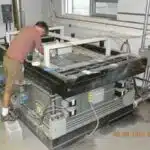
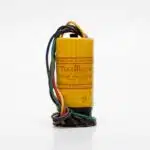

![How To Replace A Single-Pole Wall Switch 6 '... All in all it's just another [switch] in the wall.' ...](https://green-life.blog/wp-content/uploads/2023/05/17xmP5qMtVjq-150x150.jpg.webp)
